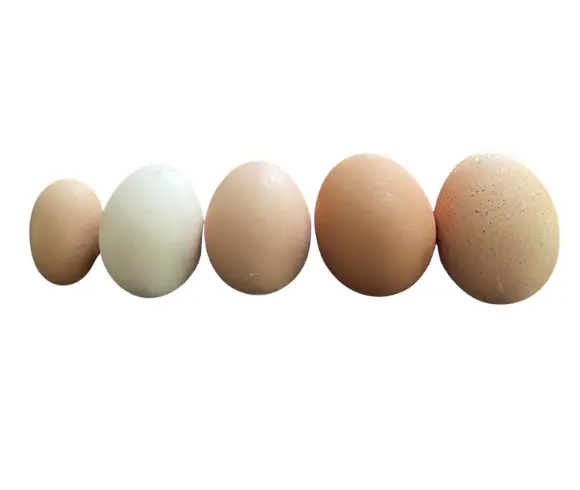The incredible, edible egg. But, what food group are eggs in? How are eggs classified? Are eggs dairy? Are eggs meat? What dietary lifestyles are able to consume eggs? These questions are easily answered once you know what food group eggs are in.
Have You Visited Our New Shop?
This post may contain affiliate links at no additional cost to you. By making your purchases through the links on this website, IMSL may make a small percentage at no direct cost to you. IMSL only promotes products we use & truly believe in. Please refer to my Privacy & Disclosures for further information. IMSL thanks you for your support!
An oval powerhouse of nutrition, rich in proteins, fat, and essential vitamins and minerals, eggs offer our bodies some pretty amazing sustenance.
But what food group are eggs in may be the biggest question asked, especially when it’s the intent to change a dietary lifestyle.
WHAT FOOD GROUP ARE EGGS IN?
Eggs are placed in the food group “protein” alongside seafood, meat, poultry, beans, peas, lentils, nuts, seeds, and soy OR any foods made from this list.
Sharing Is Caring ❤️

… and I thank you for it!
It’s important to note that even though they are placed alongside meats in this food group, they are indeed not considered meat 🤷♀️
More on why they are not considered meat below.
HOW EGGS ARE CLASSIFIED
Here in the USA, classification of eggs refers to both shell eggs nutritional value (what food group are eggs in) as well as a grading system for the eggs themselves.
USDA SHELL EGG GRADING SYSTEM
The grading system was put into place here in the US to help ensure shell eggs commercially produced meet the standards for both quality and sanitary processing requirements.
Shell eggs are categorized into one of 3 consumer grades, with additional size & quality grades …
- USDA GRADE AA – These are shell eggs of the highest quality
- USDA GRADE A – very high quality eggs receive Grade A
- USDA GRADE B – Eggs which are used for making liquid eggs, baking, and usually “defective” in some way but still usable
Eggs are also classified as a nutritional addition to what was once referred to as the Food Pyramid.
Common questions in regard to exactly where eggs fall nutritionally 👇🏻👇🏻👇🏻
ARE EGGS DAIRY?
This may be the most confusing for most. After all, when purchasing eggs at your local grocer’s they are located in the dairy aisle right next to the milk cartons!
Eggs are in fact NOT part of the dairy classification.
The U.S. Department of Agriculture refers to dairy as products produced from all fluid milk products and foods made from milk.

Where does milk come from? From animals (and humans) with mammary glands, think cows, goats, sheep, buffalo, yak, and even reindeer! Any animal that possesses glands allowing for milk production to feed newborns.
Although there are some birds which produce “crop milk” (a substance created from epithelial cells) to feed their young, chickens are not one of them.
Foods which fall under the dairy classification include milk, cream, cheese, yogurt, ice cream and the like.
Eggs are dairy-free and are available to those with dairy allergens, although some may still have an egg allergy!
ARE EGGS CONSIDERED MEAT?
Eggs are not considered meat either.
According to many dictionaries, meat is the …
Eggs possess no “flesh”. In fact, eggs are simply nuggets of nutrients meant to feed developing embryo’s safely.
It’s the portable birthing center for creating, well, more chickens 🐣
Eggs do not automatically contain embryos or fetuses. Only eggs which have been fertilized by a male chicken (rooster) will actually have a fetus.
Unfertilized eggs (no rooster present to fertilize them) contain no fetus, thus no meat.
WHERE DO EGGS FALL IN THE FOOD PYRAMID
Here in the United States a governmental agency known as the USDA, United States Dept. of Agriculture, is made up of 29 agencies and offices established to not only assist the farmers and ranchers, but also ensure that its food supplies are “safe, wholesome, and properly labeled”.
Under the umbrella of the USDA is an informative site previously known as the food pyramid, now called MyPlate.
USDA MYPLATE
MyPlate is now the official symbol of the five food groups, replacing the original food pyramid.
Mimicking that of an actual plate with food groups displayed on the plate in appropriate dietary portion sizes.
The USA’s recommendations vary little to that of our neighbor, Canada, who recommends water replacing the dairy alongside the plate.
The USA’s five food groups are broken down as follows, showing where eggs follow within those groups:
- Fruits & Vegetables make up ½ of the plate & consist of the following …
- FRUITS – Fruits in all their forms; fresh, frozen, canned, or dried/dehydrated
- VEGETABLES – All vegetables including those in their raw or cooked state, fresh, frozen, canned, or dried which can be whole, cut-up or mashed. These vegetables are then organized into 5 subgroups which are based on nutrients within: dark green, red, orange and then into beans, peas, lentils, then starchy, then any remaining vegetables. It’s important to note that beans and peas are in both the vegetable as well as the protein group
- Grains include wheat, rice, oats, cornmeal, barley and any other whole grains along with any foods made from grains, think pasta, bread, cereals, grits and the like. Grains, in both their whole and refined state, make up ¼ of the plate
- Protein foods consist of any seafood, meat, poultry, eggs, beans, peas, lentils, nuts, seeds, and soy OR any foods made from this list and make up the remaining 1/4 of the plate
- Dairy is considered a side option with the MyPlate approach in the USA. This food group includes milk, yogurt, cheese, and fortified soy milk. This group does NOT include those foods which have little calcium and high fat such as cream cheese, sour cream, and butter
WHICH DIETARY LIFESTYLES CONSUMES EGGS
With many dietary lifestyles available for many different reasons, being food sensitivities, environmental or ethical concerns, or dietary restrictions, it’s important to break down which dietary lifestyle consumes eggs.
FLEXITARIAN
Flexitarian’s are those whose diet consists of primarily vegetarianism but are, well, flexible, and limit the amounts of meat, processed foods, refined grains, and added sugars.
Consider flexitarians as semi-vegetarians. Vegetarians who primarily eat plants but also incorporate dairy, eggs, and meat from time to time.
VEGETARIANS
Vegetarians are those whose primary food source is plants, fruits, grains, nuts and seeds, eggs, dairy, and honey.
LACTO-OVO VEGETARIANS
Lacto-ovo vegetarians consist of a diet primarily of plant-based foods such as that of vegetarians, but excludes dairy and eggs.
PESCATARIAN
A pescatarian diet is the same as vegetarians except they include fish and other seafood and exclude only meats sourced from land animals, think poultry, chicken, beef, pork and such.
VEGAN
Vegans refrain from consuming any food derived from animals, think gelatin and the like, including dairy products, eggs, and honey.
Vegans often will not utilize ANY products made or derived from animal materials, products tested on animals, and do not visit places which use animals for entertainment.
KETO & PALEO
Both of these diets it is acceptable practice to consume eggs.
Many who follow these alternative diets are highly conscientious of where their food is sourced, how it was grown, and the environmental impacts their food has.
There is no right or wrong with following any of these dietary lifestyles. I will say, it can be an extreme challenge when trying to eat a whole food, organic diet filled with unprocessed foods when following some of these dietary lifestyles. That would be a challenge.
DECIPHERING EGG LABELING & TERMINOLOGY
Anyone who raises chickens knows they have their own language. As in chicken terms or chicken terminology. And this unique language doesn’t stop at the chicken or the egg, but carries over into labeling and terminology used in commercially sold products.

It’s important to note that what the chicken eats translates into how nutritious any product from said chicken is. You are what you eat AND what they, the chicken(s) eat.
Knowing the labeling and terminology used is important for just that reason; consuming the healthiest product with the highest nutrient density possible.
There are also other considerations, both ethical and environmental, which need to be paid mention & considered as well.
The labeling of commercially raised eggs here in the US can be confusing to many, especially when they are looking to consume as ethically and environmentally sound as possible.
Below find the egg labeling terminology used here in the US, some of which I’m sure is a bit eye-opening. In addition, the USDA is pretty vague in its regulation specifications with many of the following labels.
I have placed a * by the terms and labels which I personally feel can be very misleading. Understanding what they mean will hopefully encourage purchasing those eggs which you feel meet the standards you set for your family.
I urge you to do your due diligence, research, ask questions, and get involved.
*CAGE FREE
Cage free eggs come from hens which are not kept in battery cages, but instead allowed to move about in the egg production barn only.
Sounds wonderful right? Sometime’s yes, and sometime’s no.
Aren’t aware of what battery cages are? Battery cages are a housing system used for chickens (and other animals) largely in CAFO’s, concentrated animal feeding operations. Basically a factory farm for, in this case, laying hens.

This cage houses the hens, stacked one upon another, for its entire life duration. Made with a wire front which allows the chickens to stick their heads through in order to reach the feeding trough running along the front of it. This repeated process of feeding causes constant rubbing of both their necks and front resulting in loss of feathers and irritation/injuries.
Being raised cage free is a step up from the factory farming practices of CAFO’s. Still, the hens are typically stocked in the open spaces of the production barn at high densities, meaning there is no limit as to the number of birds in each barn.
Cage free hens do not have access to the outdoors or any sort of natural environment.
CERTIFIED ORGANIC
Again, you’ve heard the term, “you are what you eat?”. Well, so are chickens. What the chicken eats translates to what you eat when you consume their eggs.
Eggs with the term “certified organic”, closely monitored by the USDA and is a federal standard here in the USA, and requires extensive compliance requiring …
- chickens must have year-round outdoor access to include fresh air and direct sunlight
- chickens must be pasture-raised, requiring pasture management
- chickens must be fed a vegetarian diet (organic feed free from animal byproducts)
- chickens must be fed only with organic inputs (grain)
- chickens must have no antibiotics or synthetic hormones administered
- all inputs must be free of pesticides
- all inputs must be free from GMOs or irradiated
Only eggs produced with the above strict guidelines are able to use the term “certified organic”. All other terms listed here can be used by companies at will and often with different definitions and interpretations.
The USDA “certified organic” is not the only certification out there. When looking to purchase eggs being produced in the most ethically, sustainably, and transparent way possible, you can also look for independent certifications such as Certified Humane, GAP certification, Animal Welfare Approved and other voluntary organizations.
FREE-RANGE
The industry standard definition of free-range is …
“eggs are produced by hens raised outdoors or with access to outdoors. In addition to the feed provided, these hens may also eat wild plants and insects.”
USDA
There is no regulation or specifics as to how long the chickens have access to it or how large an area.
That being said, “outdoor access” in many cases means only a few minutes of crowded outdoor space per day in order to qualify for the free-range label.
This doesn’t mean that ALL eggs labeled with the free-range certification come from these sad circumstances.
Purchasing eggs from your local farmer is almost a guarantee that the hens enjoy a breath of fresh air daily. And longer than a few minutes.
Talk with the farmer, CSA, or research the company you are purchasing your free-range eggs to confirm just how the hens are being raised and treated.
FREE-ROAMING
Free-roaming is an interchangeable term with cage-free. Both simply mean that the chickens are kept in cages, but instead allowed to roam free within the poultry house.
This does NOT mean that free-roaming chickens have access to outdoor spaces.
PASTURE RAISED
Again, the standards of what is considered “pasture raised” vary from brand to brand.
In general, however, pasture raised chickens are given the “opportunity” to roam freely on green, grassy pastures each day.
More traditional farming methods are typically used by small scale farms, not so much by large, conventional factory farms.
SOY FED | SOY-FREE
Soy fed refers to chicken feed made from, you got it, soy. Why would you feed chickens soy? Because it’s cheap. It’s one of the cheapest forms of protein you can feed an animal.
Is it healthy for my ladies? Pretty much, no. It’s not a plant which chickens would consume naturally, and lacks the vitamins, minerals, and calcium which chickens require.
Choosing soy to feed chickens leads to deficiencies in all the above mentioned essential nutrients.
When it comes to feeding chickens soy, remember that comment “you are what you eat AND what they eat”, as well as what environmental concerns can arise should be considered.
Soy’s levels of phytoestrogens (possible endocrine disruptors which can lead to health issues) are significantly higher than any other food which do carry through to both meat and eggs.
Roughly 85% of soy grown is GMO. These soy fields are highly toxic being sprayed with pesticides and herbicides which affect our already taxed ecosystems on all levels.
Soy-free is just that, eggs produced without being fed soy inputs. This label is extremely important for those with soy sensitivities & allergies.
VEGETARIAN FED
Vegetarian fed chickens are those which are fed 100% vegetarian feed.
Chickens are not naturally vegetarians. As omnivores, they enjoy a diverse meal, including worms, bugs, insects and more.
Vegetarian fed eggs come from chickens fed a completely vegetarian diet. Standard vegetarian feeds may boast that they are non-GMO, organic, and completely vegetarian, but that doesn’t mean this type of feed is healthy for either the bird or you.
A great article written up in the Washington Post, covers this topic fully, not only indicating this type of feed falls short of providing the necessary nutrients for the chicken, but also increases behavioral risks amongst the flock …
“Chickens on an unsupplemented vegetarian diet typically fall short of an essential protein-based amino acid known as methionine, and without it, they fall ill. Worse, the birds will also turn on each other, pecking at each other in search of nutrients, and these incidents can escalate into a henhouse bloodbath, farmers say.”
Washington Post
Vegetarian fed egg producers utilize this as a subliminal message to us all, their eggs are a healthy option, when indeed this may not really be fact, very counterintuitive to what the consumer choosing this variety is trying to achieve.
THE NUTRITIONAL MAKEUP OF AN EGG
All this talk about what the chicken is being fed leading to the production a nutrient dense egg, it’s important to actually know the nutritional makeup of the egg itself along with the answers to some crackin’ egg questions 😅
ARE EGGS GOOD FOR YOU?
In a (nut)shell, sorry I can’t help myself 😅, eggs are very nutrient dense, including …
- Protein – 1 egg offers about 7g of complete protein
- Vitamin A
- Vitamin D – considered one of the FEW foods which offer naturally-occuring Vit D (essential for bone & neuromuscular function and health)
- Vitamin B12
- Vitamin B6
- Iron
- Choline – One of the best dietary sources for this essential nutrient (aids with neurological functions and brain development)
AREN’T EGGS FULL OF SATURATED FATS AND CHOLESTEROL?
Yes and no. It’s vital to look at the completed painting rather than just at the individual strokes.
When it comes to the egg itself (the completed painting), we can’t just look at individual components (individual strokes) of the egg.

Yes, eggs are definitely a source of cholesterol, but it’s important to note that current evidence is showing that there is “not a direct correlation between cholesterol intake and blood cholesterol”.
Good news for those who are healthy but at risk for developing CVD (cardiovascular disease). According to this article, “it would be worthwhile to include eggs in moderation as a part of a healthy eating pattern”, as a nutrient rich food.
ARE EGG YOLKS HEALTHY?
YES!!! Eggs are a healthy food.
In fact, the yolk hosts the MOST of the essential nutrients as well as the fat which helps your body to absorb said nutrients, AND about 40% of the egg’s protein.
So enjoy those eggs to their fullest!
EGG COLOR CONFUSION
I’ve heard some pretty radical thoughts regarding eggs of a different color.
To emphasize, colored eggs, think green, blue, brown, white and shades in between, have NO impact on the quality, nutrition found within, or taste of the egg.
Egg color is determined by the breed or variety of the hen laying the egg. Period.
GET CREATIVE & LABEL THOSE EGG CARTONS!
Tired of plain ole’ gray or brown egg cartons? Share your farm fresh eggs with others? Consider giving those egg cartons a sprucing up!
Labeling those cartons adds a bit of whimsy, and just puts a smile on my face 🤗
Easy to download, easy to print, and reusable year-to-year, I hope you enjoy using this egg carton label template as much as I do 🤗
Download yours by clicking the image below …
While You’re At It, Be Sure To Grab Your 👇🏻👇🏻👇🏻
Deciding dietary preferences is a personal choice. Having the answer to what food group are eggs in makes it all the easier in determining whether you should be enjoying them or not.
Hopefully this has taken the confusion out of the age old question, “what food group are eggs in”, and has you enjoying them for what they are. Nuggets of protein 🤗
Love, Light, & Laughter ~

SHOP IMSL’s FAVORITES
Enjoy this article? Please consider sharing it on your favorite social media channel! Want more? Subscribe below for the occasional update with all the “happenings on the hill”!







11 comments
We had no idea that eggs were not dairy. Thank you for sharing this information.
I’m in the vegan category so no animal products for me, including eggs. Many of my friends raise chickens though and consider them their “girls”.
They do have personality!
This guide to egg FAQs like which food group was very educational. My great grandparents had a large farm and my grandmother’s main chore was taking care of the chickens and eggs. So this was very insightful.
Interesting stuff! My family loves eggs, and that’s saying something because I live with two very picky eaters. My daughter would eat scrambled eggs every day if you let her.
I just learned a ton! I love eggs and I love the protein I get from them!
There is nothing like a farm fresh egg — no matter what food group eggs are in. I’m on team protien with a house full of vegetarians.
Wow! You truly have done your research! I’ve never given it much thought, but I always thought they were in the dairy food group. I love eggs!
This was such an interesting and information read! I’ve never given much thought to what food category eggs fit in, but we are a heavy egg eating family and I love learning more about the foods we eat. I’ll be sharing this information with my kids! 🙂
So interesting learning all about eggs and what food group eggs are in. I always try to buy organic and cage free, and my state is actually putting into law that only cage free can be sold. I guess it’s a step in the right direction!
Thanks for sharing this information. I always wondered what category eggs would best fit in.